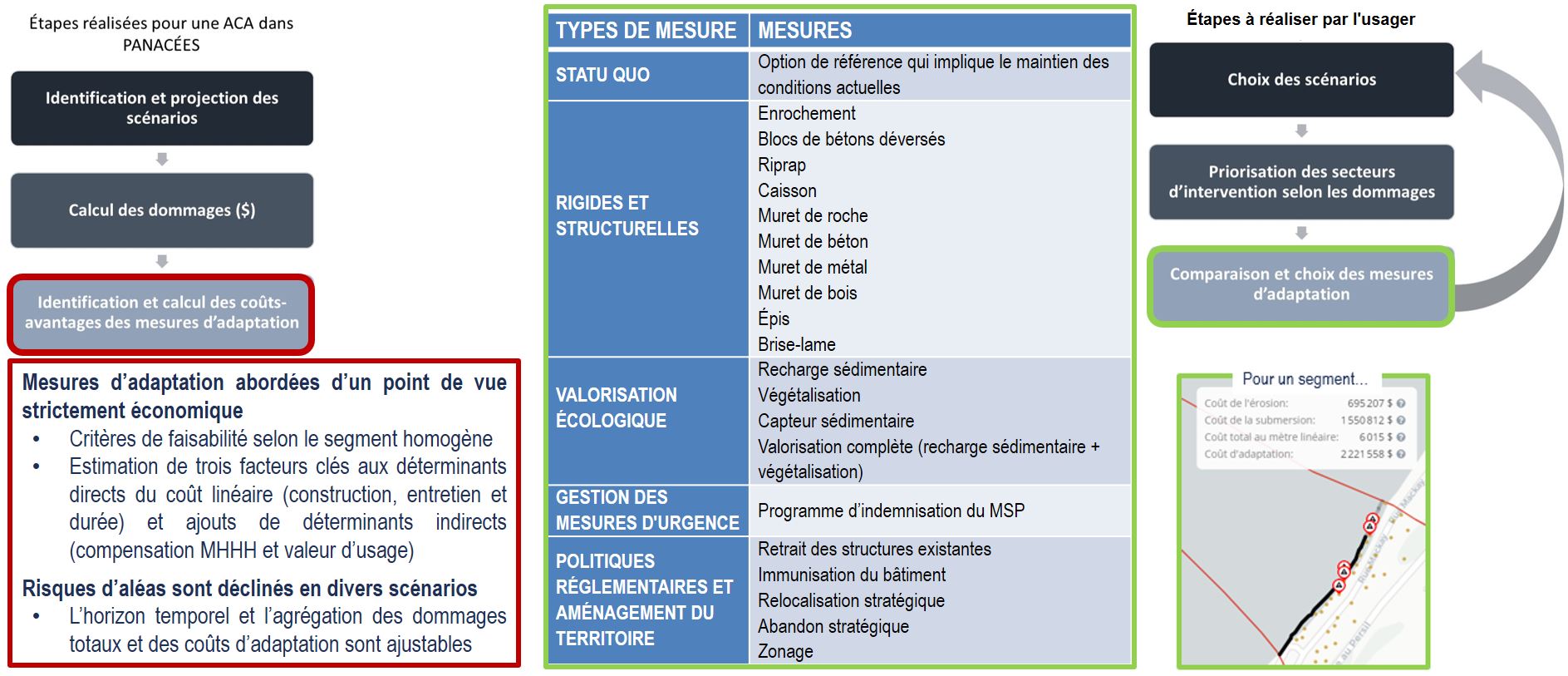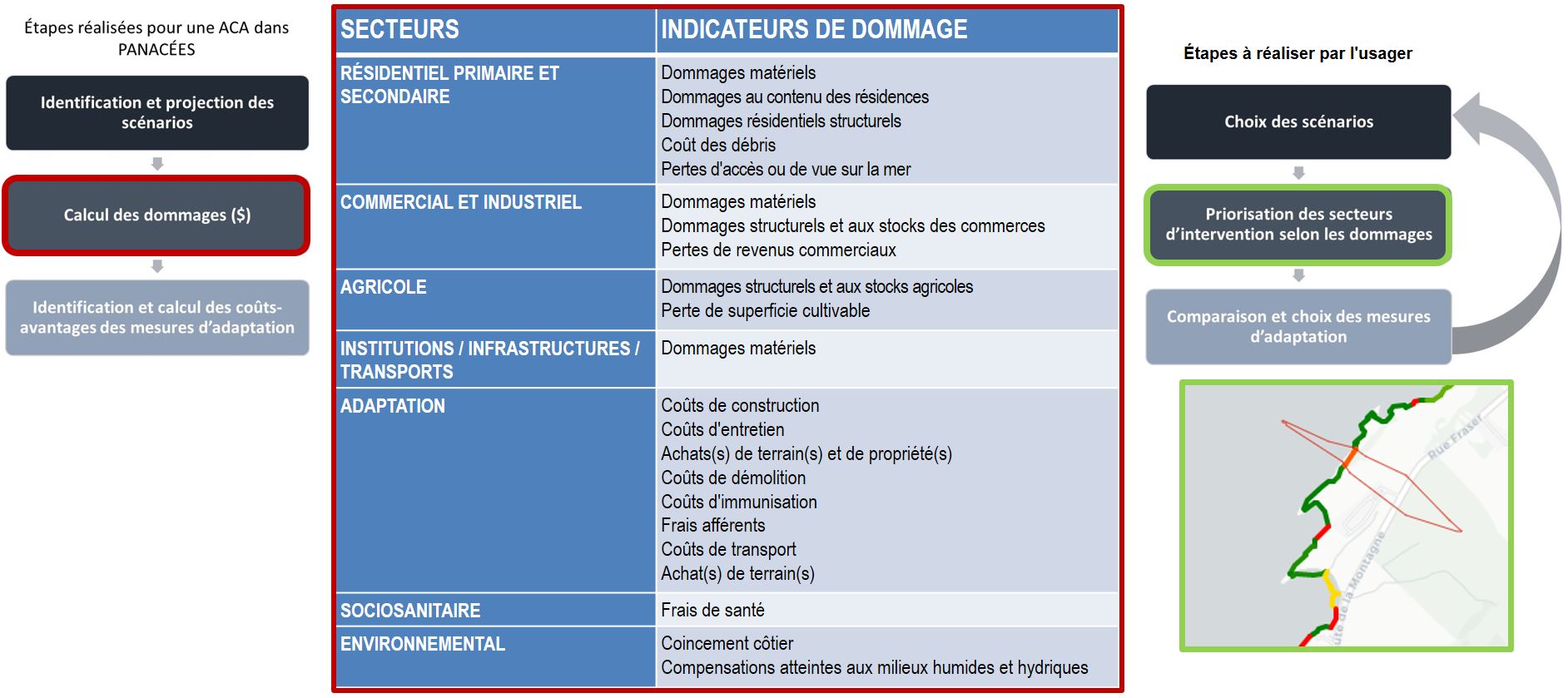PANACÉES : Platform for Cost-Benefit Analysis of Erosion and Submersion
The results of this action research, together with innovation and political will, will help the MRC to effectively review its governance framework and thus be less affected by the impacts and consequences of climate change.
Project details
Responsable scientifique

Context
As a result of rising sea levels, reduced ice cover and changes in the storm regime, climate change is threatening coastal communities by accelerating coastal erosion and submersion. In several coastal municipalities in Québec, coastal management decision-making is urgently needed in order to ensure the long-term resilience of communities.
As part of a large regional study on adaptation of coastal communities in the context of climate change conducted between 2014 and 2016, Ouranos conducted 25 cost-benefit analyses in five regions faced with these issues. This large-scale exercise showed the relevance of economic analysis in informing decisions about climate change adaptation.
This type of analysis makes it possible to prioritize intervention zones, identify the most appropriate adaptation measures and justify coastal management-related investment.
Objective(s)
-
Provide an operational tool, available on the web, that is integrative, effective and simple to use, for carrying out cost-benefit analysis in coastal environments;
-
Transfer the technical capacity for economic analysis from the research community to the practitioners responsible for land use planning to facilitate climate change adaptation throughout Québec.
Methodology
-
Hold workshops with municipal partners by means of a participatory approach to produce economic information relevant to the community;
-
Integrate economic analysis methods for coastal environments developed by Ouranos into the web tool;
-
Provide training and workshops to teach potential users how to properly use the tool.
Results
Based on a process of co-construction with the municipalities concerned and on scientific advances made in recent years, PANACÉES displays a visualization of the results of economic analyses on a graphic interface that local professionals can use to inform better decision making when it comes to selecting interventions in coastal areas, taking into account not only the cost of adaptation measures, but also their ecological services and social and economic impacts.
-
Phase 1 of the project was aimed at defining the tool’s design principles and developing the underlying economic methodologies.
-
Phase 2 quantified the psychosocial impacts related to coastal hazards for the purpose of cost-benefit analysis (CBA).
-
Phase 3, which included two workshops, focused on the development of the platform.
-
Phase 4, the tool and the platform’s user’s guide were presented to future users.
The platform is based on a three-step economic analysis in which the user plays an interactive role, leading to a choice of appropriate adaptation measures:
Scenario identification and projection
Using the most recent scientific knowledge available, PANACÉES can project a range of coastal erosion and submersion scenarios over a time horizon of 2020 to 2100.
Calculation of anticipated damages
An estimate of the cost of anticipated damages was carried out for MRC de Rivière-du-Loup and MRC de La Mitis. The costs were calculated annually in inflation-adjusted 2018 dollars for each affected element based on the property assessment roll. Anticipated damage costs are estimated using some twenty damage indicators grouped into seven key activity sectors (Figure 1).
This methodological choice was inspired by the multisectoral approach to the quantification of direct and indirect damages used in the CBA of flood mitigation measures in the Richelieu River and Lake Champlain Basin by the International Joint Commission.

Identification and calculation of the cost-benefit of adaptation measures
The ability of the user to choose one adaptation measure over another makes it possible to compare adaptation options within the framework of a cost-benefit analysis, by evaluating how the damage indicators for key activity sectors will be affected by the chosen option and identifying the most viable option on the short, medium and long term.
In view of current knowledge, 21 adaptation measures are integrated in PANACÉES (Figure 2).

PANACÉES is unique in Québec, as it makes it possible to visualize the economic impacts of coastal hazards and proposes solutions. The website presents the project, the platform and the user’s guide. As an economic tool for estimating the damage caused by erosion and submersion, PANACÉES may prove complementary to other visualization tools.
Benefits for adaptation
Benefits for adaptation
The results of this action research, together with innovation and political will, will help the MRC to effectively review its governance framework and thus be less affected by the impacts and consequences of climate change.
The knowledge gained throughout the project represents a first step in the process of adaptation to climate change by the MRC, its municipalities and the many actors present on its territory. The joint construction of participatory governance will help them take a new step towards the implementation of adaptation solutions.
Scientific publications
Funding



Other participants
-
MRC de la Mitis
-
MRC de Rivière-du-Loup
-
Municipalité de Sainte-Luce
-
Municipalité de Rivière-du-Loup
-
Municipalité de Sainte-Flavie
-
Municipalité de Métis-sur-Mer
-
Municipalité de Grand Métis
-
Municipalité de Notre-Dame-du-Portage
-
UQAM